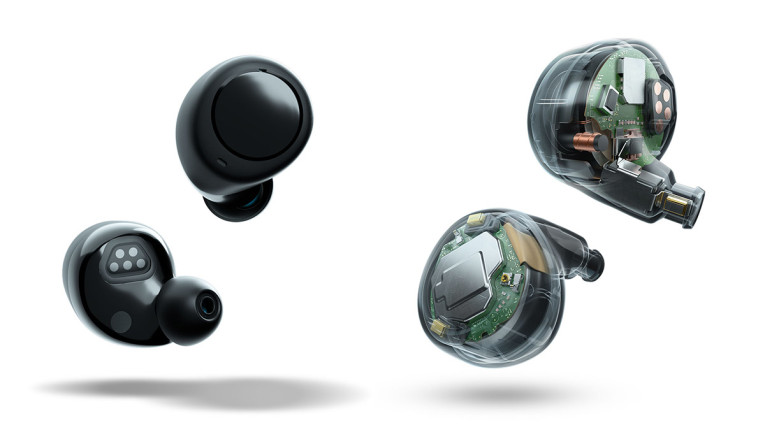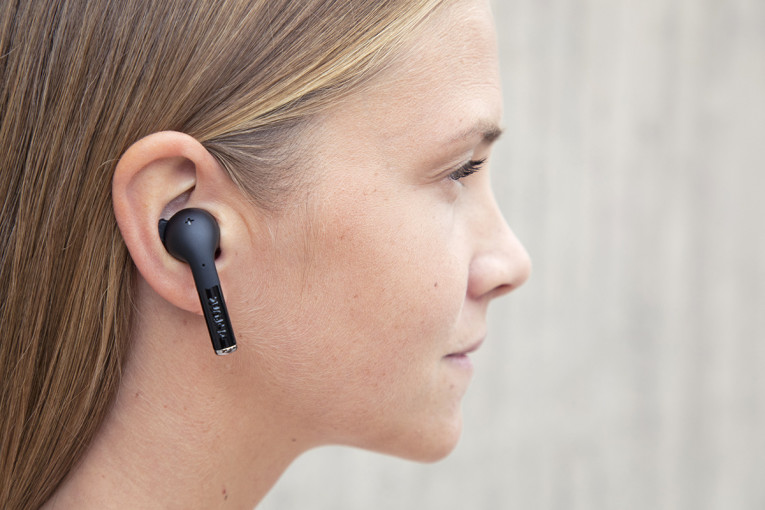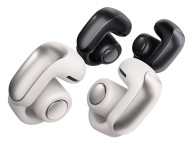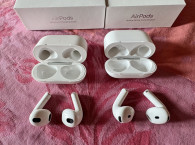Anyway, I found it interesting that both companies have decided to launch true wireless earbuds but unveiled two very different products. For Amazon, the Echo Buds are about extending its personal voice assistant - Alexa - outside the home and making it even more personal - an understandable strategy given the fact that Amazon's services are typically dependent on other companies' hardware, smartphones in particular.

As I mentioned in my brief update online, Amazon hired most of the former Doppler Labs engineering team, a pioneering effort in the true wireless space so they should have a pretty good idea of what works and what is too early or ambitious if they wanted to have a product shipping in 2019. Essentially, for me, that's what the Echo Buds show. They are clearly a decent TWS product, packed in a familiar form factor, which stands out only because of the ANC technology - not easy to do in such compact devices. The big question is whether the Amazon engineering team has decided that they needed ANC as a differentiator and selling point, or they actually needed it in order to make the voice assistant support more effective, combining audio processing abilities for optimal recognition outdoors. It's probably both, but the interesting experiment of the Echo Buds will be to actually find out how well the ANC features will work, how consumers will value it, and how effective it will be to voice assistant use cases in an in-ear TWS design.
Otherwise, as I have noted, the Echo Buds will essentially eat up the market for me-too products like the Galaxy Buds and countless others, and will hardly challenge Apple's AirPods at all. And I believe there is a key factor for that, which is being largely ignored. But before I address why, I must discuss the Microsoft announcement - the Surface Earbuds.
During its own event, Microsoft unveiled a series of new Surface products, including an Android phone with two screens (!). According to Satya Nadella, the current Microsoft CEO, this is because he believes in "amplifying what we can do as humans," which apparently means two of each for everything. So, it makes sense to have headphones, because we have two ears...

The new Surface Earbuds will apparently "work on any platform," offer eight hours of use per charge, and feature a big outside round "surface," because Microsoft still believes that users want to use gestures, not only to control play, pause, skip, and change the volume of music, but also to change PowerPoint slides or access Outlook calendar (seriously?). And apart from working with Microsoft Office (!) the Surface Earbuds "support over 60 languages," so they can translate as you speak and input voice-to-text into documents and PowerPoint presentations, or when you talk to other people in real-time. Where did Microsoft found the amazing revolutionary technology to deliver on that (oh, so familiar) promise we don't know for now, but we will find out when these Bluetooth 4.1/4.2 earbuds ship "later this year," for $249 - substantially more than what Amazon will ask for the Echo Buds, which will sell for $129.99.
What I found most interesting about Microsoft's Surface Earbuds was the design itself. Yes, they have that big round surface that will confer a distinct "iconic" look to the user - just like the AirPods do in a different way - but inside they also use the loose-fit design that Apple adopted since the EarPods (and which Bose pioneered). Microsoft promotes the Surface Earbuds highlighting its "immersive Omnisonic sound" and "innovative design that delivers an ultra-comfortable and stable fit." And they state: "Simply position each earbud in your ear and the four individual anchor points lock them securely into place - no blocking your ear canal, and no falling out." Yes, this is important if you are going to use extensive gesture controls, with multiple taps and swipes, like the Surface Earbuds are designed to allow.
Inside, the Surface Earbuds have custom-designed 13.6 mm dynamic drivers, two advanced microphones in each earbud that block out background noise while amplifying the user's voice. But for me the significant aspect of the design is that they do not go inside the ear and do not completely block the ear canal - just like Apple's design.
I know that for anyone who likes "high end" audio experiences that only in-ear designs can provide, the loose-fit design is simply not good enough and users tend to associate it with "cheap" earbuds. Apple with the AirPods proved that's not the case, and now Microsoft seems to agree. Because apparently there are many millions of people for which this "good enough," loose-fit earbud design is preferable, and this has not been sufficiently examined.

Since the original EarPods launched in 2013, Apple promoted the "breakthrough design" for its natural fit and "better acoustics." The patent describes: "The headphones - the component that generates sound - can exist in many different form factors such as over-the-hear headphones or as in-the-ear or in-the-canal earbuds. In-the-ear earbuds are sometimes referred to as non-occluding earbuds as they generally do not form an airtight seal with the user's ear. The absence of an airtight seal can affect the earbud's acoustic performance, especially when two or more speakers are used. Accordingly, what is needed is a non-occluding earbud having two or more speakers and that provides high quality sound."
And there's a lot more things in the design as well, such as the acoustic holes and the way they interact with the ear canal when taking calls and using the built-in microphones, or the way they allow driving separate frequencies from a woofer and a tweeter into the ear-canal. And in 2016, with the AirPods, Apple took it to another level, adding sensors and refining the shape even more - becoming more "universal." While the EarPods were rejected by some users with smaller ears for being too big and hence painful to use for a long time, the thinner profile of the AirPods make it more suitable to a larger percentage of ear shapes and sizes.
Yes, for some people, the AirPods are too loose, they fall easily, and when compared to any earphones that are inserted directly in the ear, there's no comparison in terms of fidelity of the music experience. But still, the AirPods do a very good job adjusting the response, and using the sensors to determine when they are in place, and it is expected that Apple will leverage the concept to expand biometric sensors and design a different level of audio processing that cancels/enhances only specific frequencies, cancels sound leakage, and is able to be more transparent with others. In its US 010149041 patent, Apple describes refining that shape so that the earbuds can be "worn interchangeably in either a left or a right ear of a user" and eventually using a soft surface instead of hard plastic, in order to achieve best contact with the skin.
And the loose-fit form factor is not even an impediment for implementing active noise cancellation. While it makes the whole processing more complicated, it could actually show some benefits in augmented hearing applications and hearables. As Austrian company ams already demonstrated, loose-fit true wireless earbuds are compatible with ANC, even when more external noise can "leak" into the ear. For that scenario, ams designed Automatic Leakage Compensation (ALC) processing, which allows adjusting for the air leakage between the earbud and the user's ear in real time, while still achieving a noise attenuation rating of 30 dB. Not dealing with the occlusion effect also helps to compensate the phase variations in selected frequencies, or what some people have called "the eardrum suck phenomenon."

And of course many companies are simply copying Apple's design, because what works for them... We've seen many AirPods' copies launched in the market, but many also opt to combine the design with the traditional in-ear tips for the added passive noise filtering. Others actually try to improve on the Apple design, and detail the reasons why the loose-fit design might be more important than people think.
As Swedish audio brand Defunc describes in its TRUE GO true wireless earbuds, they complemented the design using a soft silicone membrane carefully shaped to look the same as the AirPods. The MultiTip -design, Defunc says "ensures a better sound, secure and comfortable fit." But more interestingly, the Swedish company says it conducted a consumer research survey of 200 people to test a number of different 3D-printed earbud tips, which determined this to be their "improved true wireless experience." And of course they are Bluetooth 5.0 and sell for just $49 USD...
This article was originally published in The Audio Voice email weekly newsletter, October 2019. Sign-up here.







